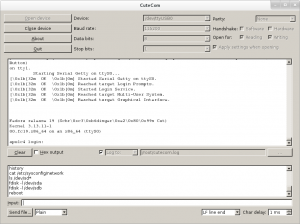Today I just found out, how super easy it is to setup a safe HTTP authentication via Kerberos with help of FreeIPA. Having the experience of managing a manually engineered MIT Kerberos/OpenLDAP/EasyRSA infrastructure, I’m once again blown away by the simplicity and usability of FreeIPA. I’ll describe with only a few commands which can be run within less than 10 minutes how it’s possible to setup a fully featured Kerberos-authenticated Web server configuration. Prerequisite is a FreeIPA server (a simple guide for installation can be found for example here) and a RedHat-based Web server host (RHEL, CentOS, Fedora).
Required Packages:
First we are going to install the required RPM packages:
# yum install httpd mod_auth_kerb mod_ssl ipa-client
Register the Web server host at FreeIPA:
Make sure the Web server host is managed by FreeIPA:
ipa-client-install --domain=example.com --server=ipaserver.example.com --realm=EXAMPLE.COM --mkhomedir --hostname=webserver.example.com --configure-ssh --configure-sshd
Create a HTTP Kerberos Principal and install the Keytab:
The Web server is identified in a Kerberos setup through a keytab, which has to be generated and installed on the Web server host. First make sure that you have a valid Kerberos ticket of a FreeIPA account with enough permissions (e.g. ‘admin’):
# kinit admin # ipa-getkeytab -s ipaserver.example.com -p HTTP/webserver.example.com -k /etc/httpd/conf/httpd.keytab
This will create a HTTP service principal in the KDC and install the corresponding keytab in the Apache httpd configuration directory. Just make sure that it can be read by the httpd server account:
# chown apache /etc/httpd/conf/httpd.keytab
Create a SSL certificate
No need to fiddle around with OpenSSL. Requesting, signing and installing a SSL certificate with FreeIPA is one simple command:
# ipa-getcert request -k /etc/pki/tls/private/webserver.key -f /etc/pki/tls/certs/webserver.crt -K HTTP/webserver.example.com -g 3072
This will create a 3072 bit server key, generate a certificate request, send it to the FreeIPA Dogtag CA, sign it and install the resulting PEM certificate on the Web server host.
Configure Apache HTTPS
The httpd setup is the only and last configuration which needs to be done manually. For HTTPS set the certificate paths in /etc/httpd/conf.d/ssl.conf:
[...] SSLCertificateFile /etc/pki/tls/certs/webserver.crt SSLCertificateKeyFile /etc/pki/tls/private/webserver.key SSLCertificateChainFile /etc/ipa/ca.crt
Additionally do some SSL stack hardening (you may also want to read this):
[...] SSLCompression off SSLProtocol all -SSLv2 -SSLv3 -TLSv1.0 SSLHonorCipherOrder on SSLCipherSuite "EECDH+ECDSA+AESGCM EECDH+aRSA+AESGCM EECDH+ECDSA+SHA384 EECDH+ECDSA+SHA256 EECDH+aRSA+SHA384 EECDH+aRSA+SHA256 EECDH EDH+aRSA !aNULL !eNULL !LOW !3DES !MD5 !EXP !PSK !SRP !DSS !RC4"
Kerberos HTTP Authentication:
The final httpd authentication settings for ‘mod_auth_kerb‘ are done in /etc/httpd/conf.d/auth_kerb.conf or any vhost you want:
<Location /> SSLRequireSSL AuthType Kerberos AuthName "Kerberos Login" KrbMethodNegotiate On KrbMethodK5Passwd On KrbAuthRealms EXAMPLE.COM Krb5KeyTab /etc/httpd/conf/httpd.keytab require valid-user </Location>
That’s it! After restarting the Web server you can login on https://webserver.example.com with your IPA accounts. If you don’t already have a valid Kerberos ticket in the Web client, KrbMethodNegotiate On enables interactive password authentication.
Troubleshooting
In case you get the following error message in the httpd error log, make sure the keytab exists and is readable by the httpd account (e.g. ‘apache’):
[Wed Aug 27 07:23:04 2014] [debug] src/mod_auth_kerb.c(646): [client 192.168.122.1] Trying to verify authenticity of KDC using principal HTTP/webserver.example.com@EXAMPLE.COM [Wed Aug 27 07:23:04 2014] [debug] src/mod_auth_kerb.c(689): [client 192.168.122.1] krb5_rd_req() failed when verifying KDC
